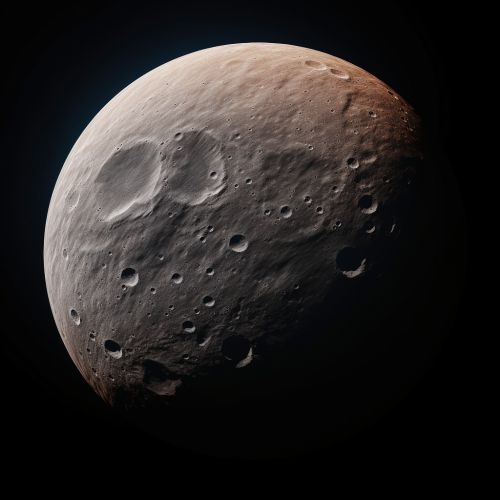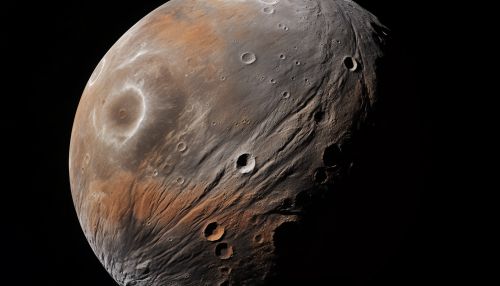Phobos
Introduction
Phobos is the larger and closer of the two natural satellites of Mars, the other being Deimos. Named after the Greek god Phobos, a son of Ares (Mars) and Aphrodite (Venus) and the personification of fear, the moon orbits the Red Planet at a closer distance than any other moon in the solar system orbits its primary planet.


Discovery and Naming
Phobos was discovered by American astronomer Asaph Hall on August 18, 1877, at the United States Naval Observatory. Hall discovered Deimos a few days earlier. The names, originally suggested by Henry Madan (1838–1901), Science Master of Eton, come from the Greek mythology where Phobos is a son of Ares (Mars) and Aphrodite (Venus) and the personification of fear.
Physical Characteristics
Phobos is an irregularly shaped object with a mean radius of 11.1 km. Its most prominent feature is the large impact crater, Stickney, which takes up a substantial portion of its surface area. The moon's surface is also covered with a layer of fine dust and rock, a regolith, created by impacts from other space debris.
Orbit and Rotation
Phobos orbits Mars at a distance of approximately 9,377 kilometers, closer to its primary planet than any other moon in the solar system. It has an extremely tight orbit, which causes it to complete an orbit in just 7.66 hours. The moon is also tidally locked, meaning the same face is always pointed towards Mars.
Origin and Composition
The origin of Phobos is still a topic of debate among scientists. Some theories suggest that Phobos and Deimos were once asteroids that were captured by Mars' gravitational pull. Other theories propose that the moons formed in orbit around Mars, similar to our own moon. Phobos is composed primarily of carbonaceous chondrite, similar to asteroids found in the outer asteroid belt.
Future of Phobos
Due to tidal deceleration, Phobos is slowly spiraling in towards Mars, getting about 2 meters closer each century. Scientists predict that in about 50 million years, Phobos could either crash into Mars or be torn apart by its gravity, creating a ring around the planet.
Exploration
Phobos has been the target of several unmanned missions, mostly by the Soviet Union and more recently by the European Space Agency. The most recent mission, the ExoMars program, includes a planned flyby of Phobos for detailed study.
